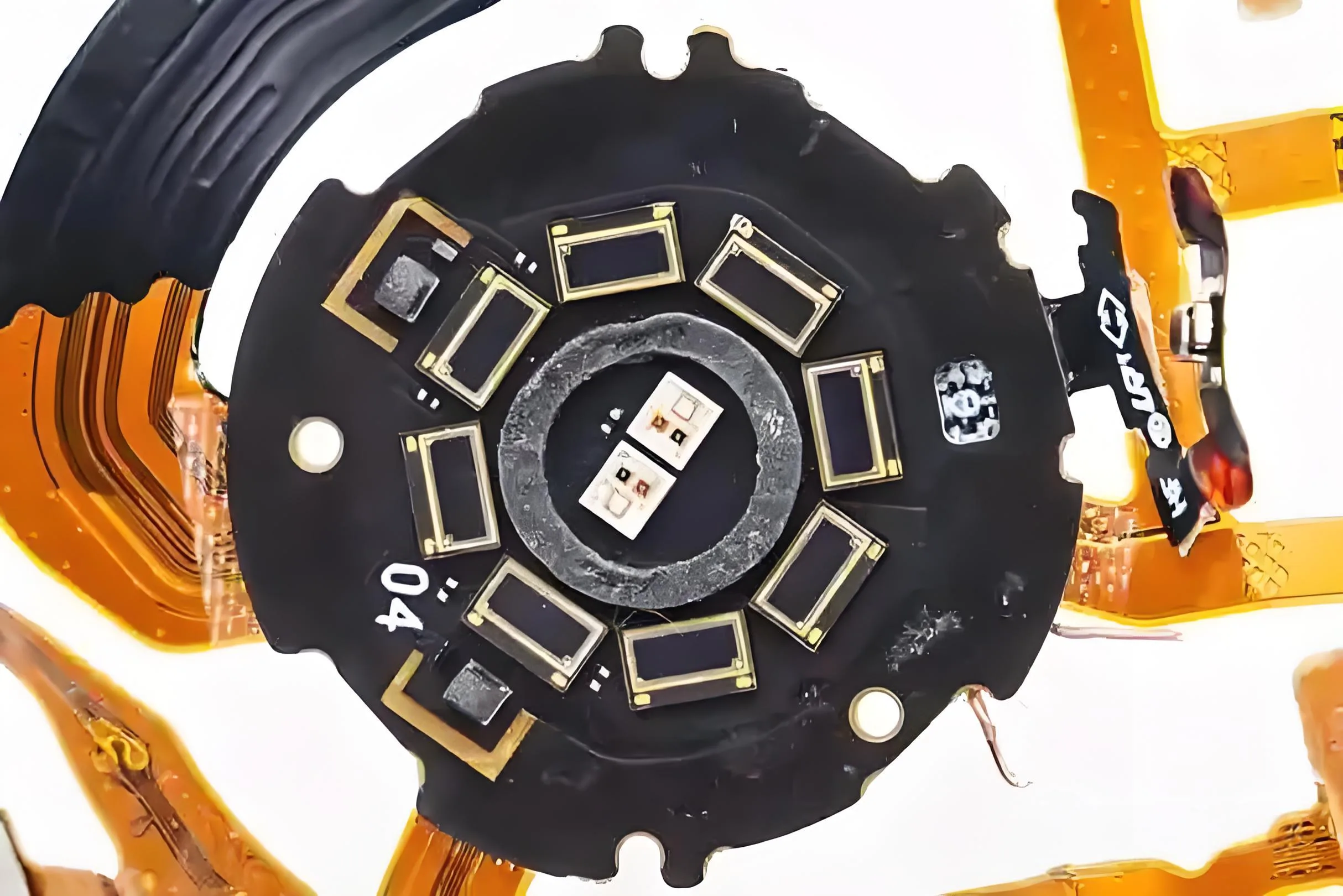Radio signals traverse invisible airwaves, powered by RF PCB undergoing a silent yet transformative technological evolution.
The rapid advancement of high-frequency communication is propelling RF PCB technology into a new era. Global 5G infrastructure deployment accelerates, millimeter-wave spectrum adoption expands, and IoT device proliferation grows exponentially – all demanding unprecedented performance from RF circuits.
Traditional FR-4 materials struggle with high-frequency requirements, while innovations like graphene transistors, liquid crystal polymer (LCP) พื้นผิว, and low-temperature curing adhesives are pushing physical boundaries. Concurrently, rigid-flex PCBs now achieve 100,000+ โค้งงอ, flexible circuits reach 0.05mm thickness, and custom-length FPC production becomes feasible – manufacturing breakthroughs enabling wearable electronics and new-energy vehicle innovations.
1. Material Revolution: Breaking High-Frequency Barriers
RF PCB performance hinges on core material properties. At millimeter-wave frequencies (>30กิกะเฮิรตซ์), ค่าคงที่ไดอิเล็กตริก (ดีเค) และ ปัจจัยการกระจาย (ฟ) become critical selection parameters determining signal transmission efficiency.
Traditional FR-4 (Dk≈4.3, Df≈0.02) exhibits significant loss above 10GHz, failing 5G/radar demands. Industry solutions now include:
-
Graphene RF Transistors: Flexible substrates now support 39GHz cutoff frequency devices. Carrier mobility reaches 2,500 cm²/V·s with <10% performance degradation after 1,000 โค้งงอ (IEC 60340 มาตรฐาน).
-
LCP Substrates: Preferred for wearables, LCP hybrid flex circuits achieve >90% transmittance and 3mm bend radius with 100,000-fold durability. Superior electrical properties (Dk=2.9-3.1, Df=0.002-0.004) outperform conventional materials.
-
Low-Temp Adhesives: Novel epoxy formulations cure at 80-120°C (30% lower than traditional processes), extending stencil life to 8,000+ prints while reducing production costs by 18%. Ideal for Mini LED packaging and automotive flex circuits.
High-Frequency PCB Material Comparison
| วัสดุ | ดีเค | ฟ | Max Frequency | Cost Factor |
|---|---|---|---|---|
| Standard FR-4 | 4.3-4.8 | 0.018-0.025 | <5กิกะเฮิรตซ์ | 1.0x |
| Rogers 4350b | 3.48± 0.05 | 0.0037 | 30กิกะเฮิรตซ์ | 8.5x |
| PTFE-Based | 2.8-3.0 | 0.0009-0.002 | 77กิกะเฮิรตซ์ | 12x |
| LCP | 2.9-3.1 | 0.002-0.004 | 110กิกะเฮิรตซ์ | 15x |
| Graphene Composite | 2.3-3.5 | 0.0005-0.001 | >100กิกะเฮิรตซ์ | 20x+ |
2. Design Breakthroughs: Redefining Density & ประสิทธิภาพ
Device miniaturization demands space-optimized RF PCB designs:
-
Ultra-thin flex circuits (0.05มม) increase wiring density by 50%, enabling 20% volume reduction in Tesla’s 4680 battery packs.
-
HDI rigid-flex boards achieve 20/20μm trace/space with 56Gbps throughput (เช่น, Apple Vision Pro eye-tracking sensors), using laser back-drilling to control stubs <50μm.
-
Thermal management innovations: Nano-modified polyimide withstands 300°C and 1200V breakdown voltage for 800V EV platforms.
*”Rigid-flex PCBs contour to smartwatch curves, improving space utilization by 40%” – Huawei Watch GT4 Design Team*
3. การผลิต: Precision Meets Intelligence
-
การถ่ายภาพโดยตรงด้วยเลเซอร์ (LDI): Enables 5μm line widths with 92% ผลผลิต, tripling traditional exposure efficiency.
-
Stepwise Processing: Combines die-cutting with laser etching for ±2μm dimensional accuracy (01005 component compatible).
-
AI Visual Inspection: 99.9% defect recognition for micron-level flaws, enhancing reliability while reducing costs.
4. การใช้งาน: Wearables to Electric Vehicles
Wearable Technology
Rigid-flex PCBs dominate the $150B wearable market:
-
Lululemon yoga pants with pressure-sensing flex PCBs
-
Apple Watch Ultra ECG connections (500Mbps data rate)
-
Meta Quest 4 บอร์ด HDI integrating 12 cameras + 5 mmWave radars
EV Electronics
BYD’s automotive flex solutions:
-
BMS FPCs with 100k cell monitoring/sec
-
Steering wheel ECG modules (95% ความแม่นยำ)
-
THz-ready circuits for 6G V2X (0.1ms latency target)
High-Frequency Systems
Graphene RF transistors enable 39GHz 5G/6G base stations. Conductive inks reduce skin effect, while graphene-copper composites enhance corrosion resistance.
5. Future Trends: การบรรจบกัน & Advancement
-
ส่วนประกอบที่ฝังอยู่ (IPD): 01005 component integration shrinks board size 40% while improving signal integrity.
-
Self-Powered Systems: Triboelectric nanogenerators (TENG) harvest kinetic energy; Neuralink-style brain interfaces enable thought-controlled vehicles.
-
การผลิตที่ยั่งยืน: Water-based inks and lead-free soldering reduce waste by 40%. Copper recycling rates >95% สนับสนุน “Zero-Carbon FPC” goals by 2030.
*Materials scientists predict: “Graphene-liquid metal composites will breach 100GHz barriers for 6G physical layers.”*
6. บทสรุป
RF PCB advancements span materials (graphene/LCP), ออกแบบ (3D integration), and manufacturing (AI/LDI). These innovations drive 5G infrastructure, อุปกรณ์ที่สวมใส่ได้, and EV performance.
With expanding 5G/mmWave deployments and IoT growth, demand for high-frequency PCB suppliers will intensify. Industry leaders like UGPCB continue developing patented solutions in advanced materials and flexible circuit technologies.
 โลโก้ UGPCB
โลโก้ UGPCB



